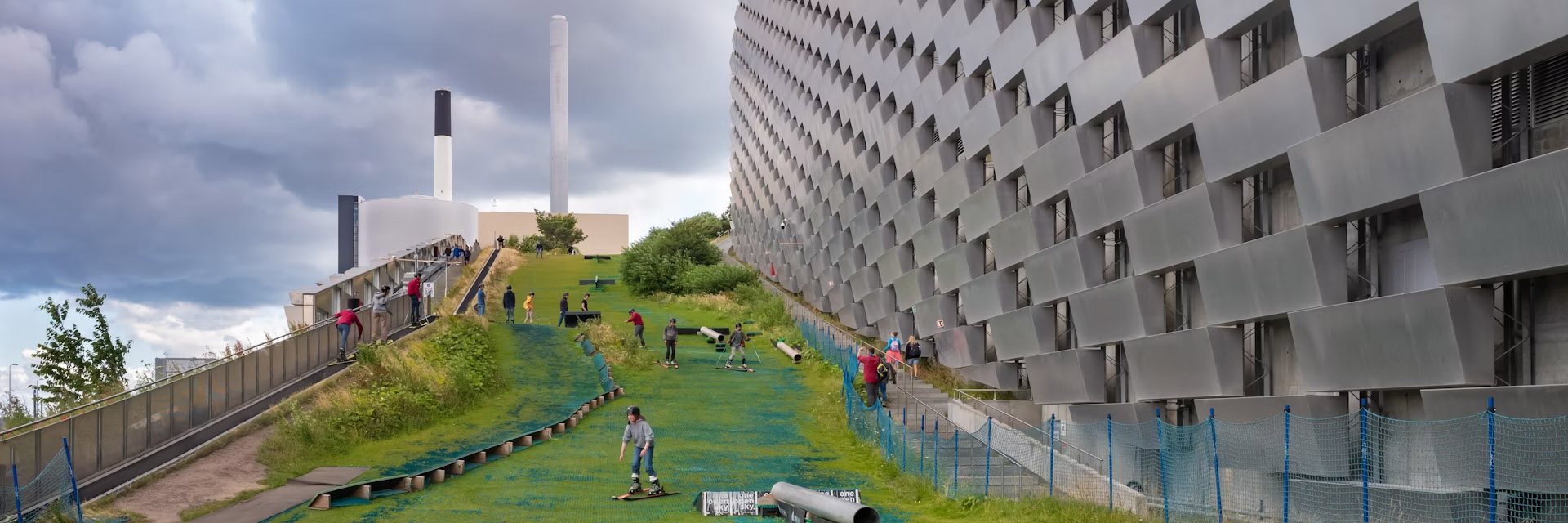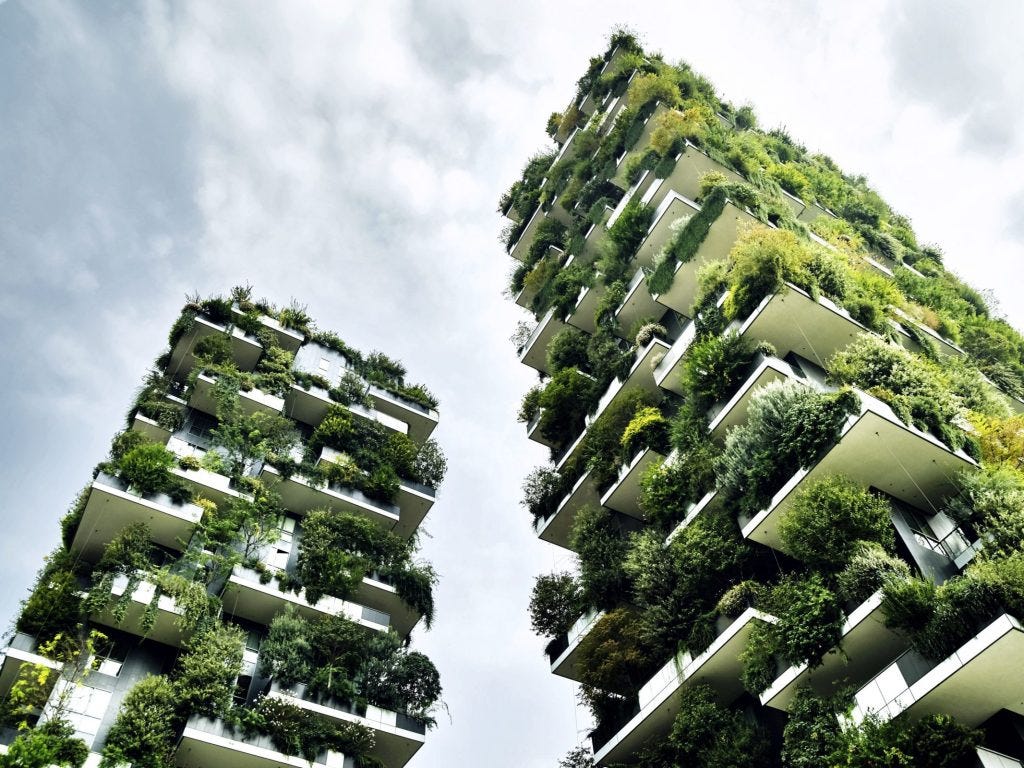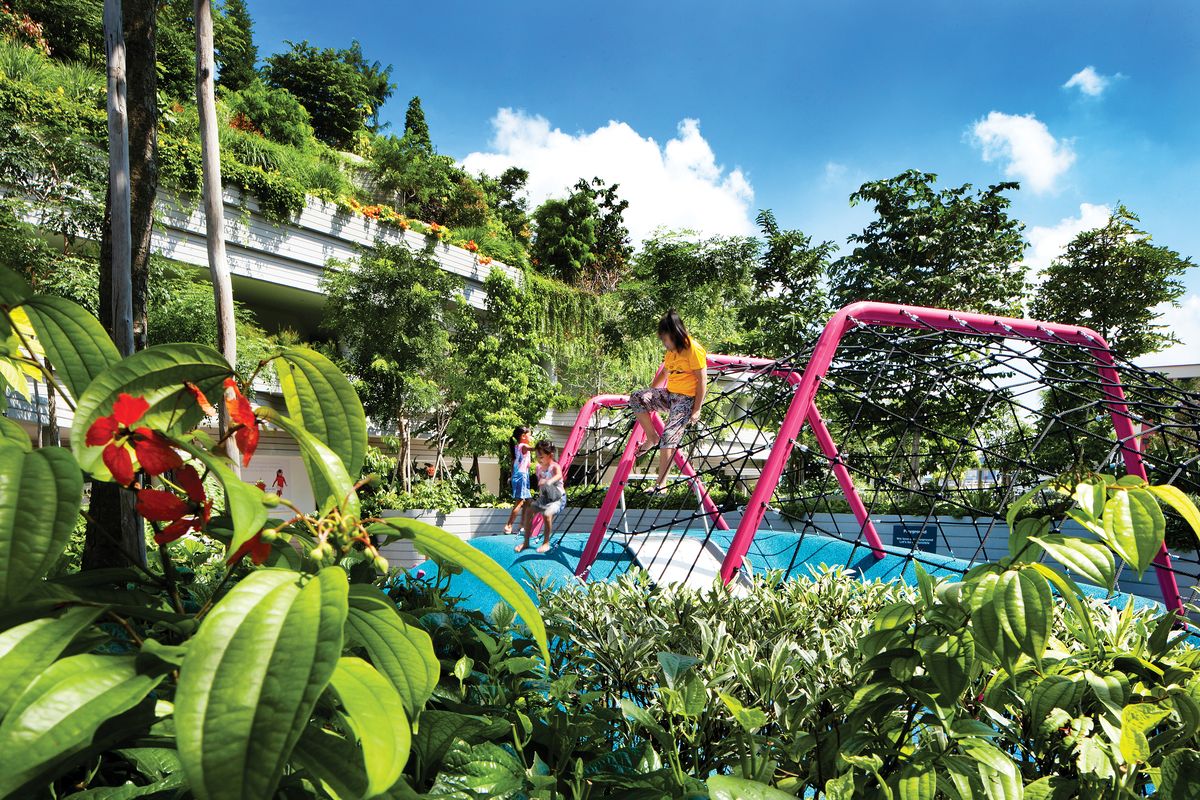Environment, a creative canvas
By Alice Leeton
Associate

Is sustainability the secret to unforgettable places
Picture this; you walk into a property where the walls are literally breathing—living moss systems that purify the air while creating Instagram-worthy backdrops. A coffee shop runs entirely on energy generated by footsteps in the lobby. The rooftop garden doesn’t just look beautiful; it’s feeding the community restaurant below and storing rainwater for the entire building.
This isn’t some distant utopia. It’s happening right now, and it’s completely changing how I think about what makes a place truly memorable.
The Curiosity Question That Started It All
When first joining the property industry and starting my career at Bewonder*, I kept asking myself: why do some places stick with you long after you’ve left, while others fade the moment you walk away? The obvious answers—stunning design, prime location, premium amenities—felt incomplete.
When Green Becomes Gold
I recently discovered a mixed-use development in Copenhagen where they’ve turned waste management into community art. Residents contribute to a massive living sculpture that grows based on their recycling efforts. It sounds quirky, but the waiting list for apartments there is eighteen months long.
Then there’s BioMilano in Italy, where the entire district was designed around regenerative principles. The central plaza literally changes with the seasons—bioswales that manage stormwater in winter become community amphitheaters in summer. Children play in areas that are simultaneously teaching them about water cycles and preventing urban flooding.
In Singapore, Kampung Admiralty integrates a public hospital, senior housing, and community gardens in one vertical village. The building breathes through natural ventilation, and food grown on-site is used in the hospital cafeteria. It’s won architecture awards, but more importantly, it’s become a genuine community hub.

These places aren’t just sustainable; they’re using sustainability as a canvas for imagination.

The Magic Happens in the Details
What strikes me most is how sustainability unlocks creative possibilities rather than limiting them. When you start thinking about energy, water, and waste as design opportunities instead of compliance boxes to tick, suddenly everything becomes more interesting.
Imagine lobbies where the lighting changes colour based on the building’s real-time energy production. Picture community spaces where local food waste becomes the fuel for vertical gardens that residents can harvest. Envision parking areas that transform into bioswales during heavy rainfall, preventing flooding while creating temporary wetland habitats.
These aren’t expensive add-ons—they’re reimagining ordinary functions through an environmental lens, creating experiences that residents and visitors actually want to engage with, share and most importantly support.
The Shift I’m Seeing
There’s something profound happening in how people choose where to live and work. It’s not just about sustainability as a moral choice anymore—it’s about sustainability as a signal of innovation, creativity, and forward-thinking.
People are drawn to places that demonstrate imagination in solving environmental challenges because it suggests those same problem-solving skills will be applied to everything else. The developer who figures out how to make composting beautiful probably also knows how to create exceptional community experiences.
Just Imagine the Possibilities
This is where Bewonder’s philosophy really comes alive. When we say imagination makes the difference between the ordinary and the unforgettable, sustainability might be our most powerful creative tool.
What if every development told an environmental story so compelling that people chose to live there specifically to be part of that narrative? What if sustainable features weren’t hidden behind the scenes but celebrated as the most interesting thing about a place?
The developments getting this right aren’t just reducing their carbon footprint—they’re creating entirely new categories of desirability. They’re proving that when you lead with imagination, sustainability stops being a nice-to-have and becomes the very thing that makes a place unforgettable.
The question isn’t whether this approach works. It’s whether we’re brave enough to imagine what’s possible when environmental responsibility becomes the foundation for creative expression rather than a constraint on it.
What would you create if sustainability was your starting point for imagination rather than your finishing touch?
Then I started noticing something fascinating. The places that genuinely excited people, that had them telling stories and bringing friends back, were the ones doing something unexpected with sustainability. Not the predictable “we have solar panels” approach, but imaginative, almost playful interpretations of environmental responsibility.